Blog
Thanks for visiting our blog. You can browse all of our posted articles by date or by category.
- Entries by Date.
- Entries by Category.
- Advantages of Open Source.
- Digital Sovereignty.
- Disadvantages of Proprietary Technology: Control and Ownership.
- Disadvantages of Proprietary Technology: Data and Privacy.
- Disadvantages of Proprietary Technology: Deployment and Operations.
- Disadvantages of Proprietary Technology: Profit-First Practices.
- Disadvantages of Proprietary Technology: Quality and Stability.
- Disadvantages of Proprietary Technology: Support and Responsiveness.
- Disadvantages of Proprietary Technology: Trust and Relationships.
Entries by Date
2025
November

The Importance of Open-Source
Why reclaiming openness in science and engineering is essential for humanity's future resilience and progress.
Read Article

What Is Digital Sovereignty?
Digital Sovereignty is a vital, growing movement against exploitative tech systems.
Read Article
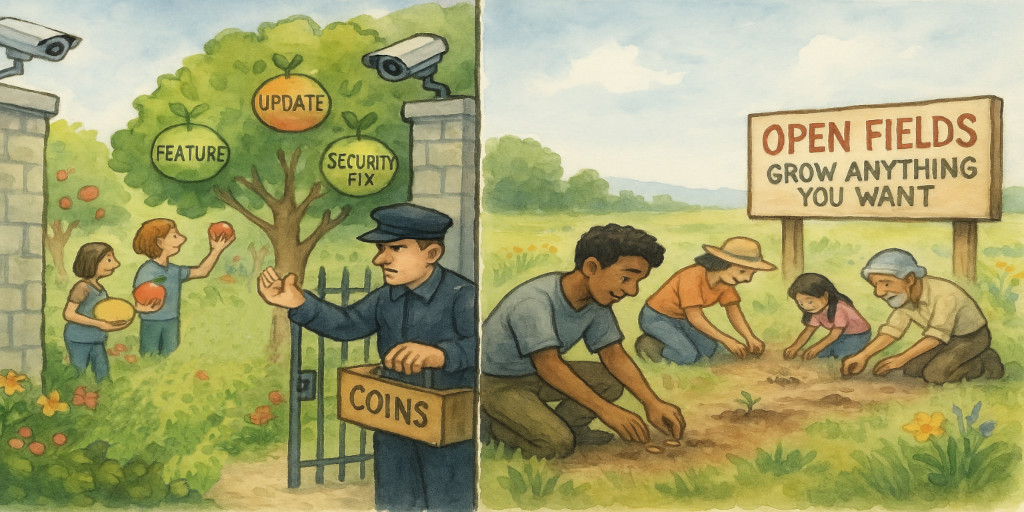
Rethinking Proprietary Technology in an Age of Digital Sovereignty
Reclaiming digital sovereignty through open-source technology.
Read Article
October
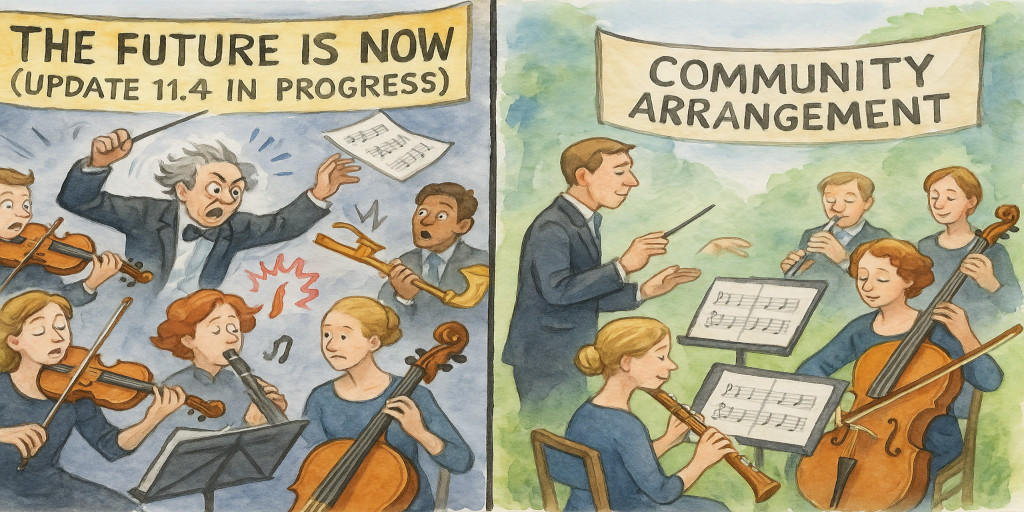
Commercial Pain Points: Unpredictable Update Cycles
When constant change devolves into chaos, only discipline and diligence can bring technology back to order.
Read Article
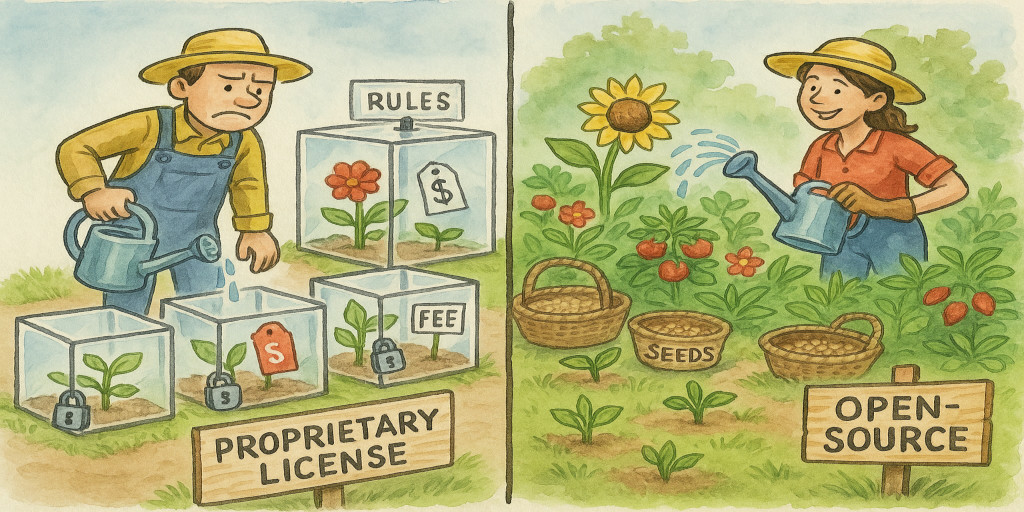
Commercial Pain Points: Inflexible Licensing
Proprietary licensing models create hidden costs in operations, while open-source offers a more empowering alternative.
Read Article
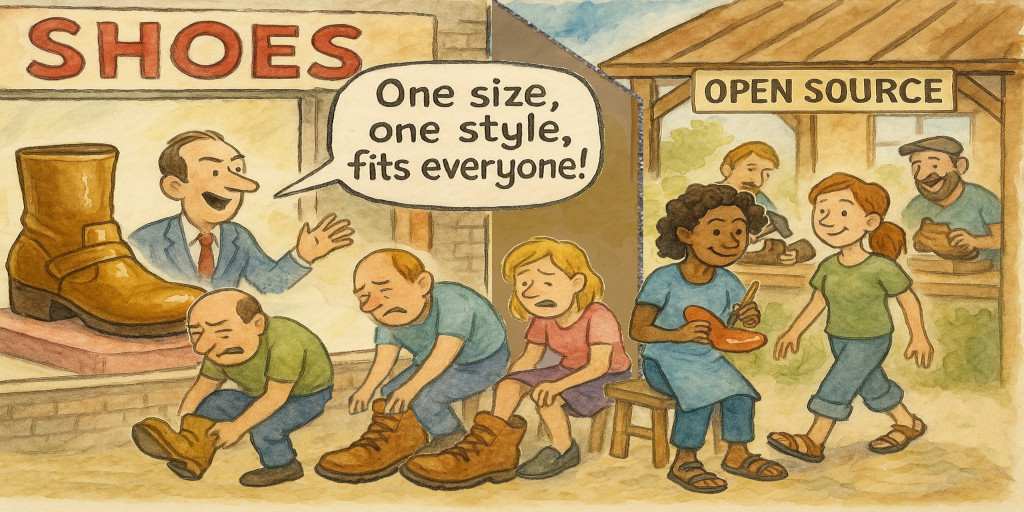
Commercial Pain Points: Rigid Deployment Options
How rigid vendor deployment models trap users, while open-source offers the flexibility and control to break free.
Read Article
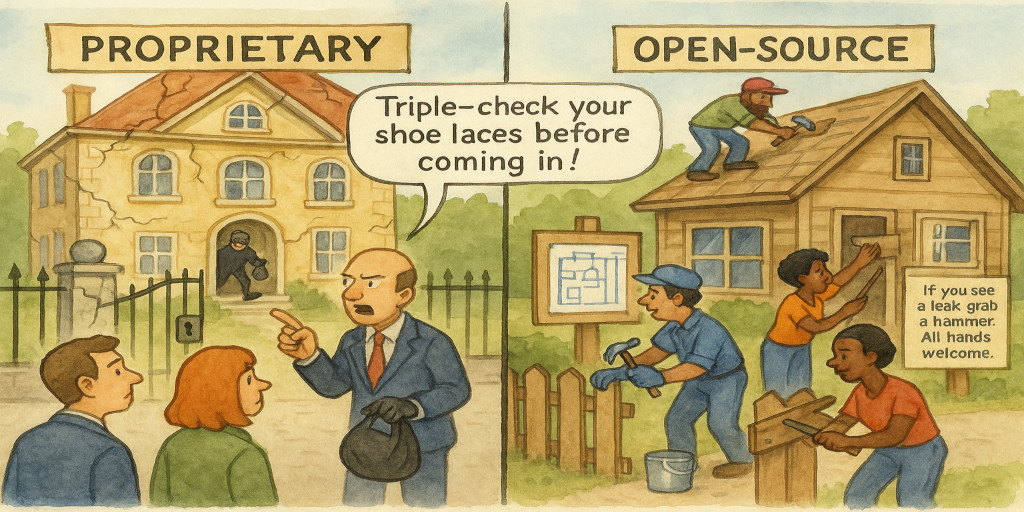
Commercial Pain Points: Security as a Secondary Concern
Why closed-door security practices leave us exposed, and how openness offers real protection.
Read Article
September
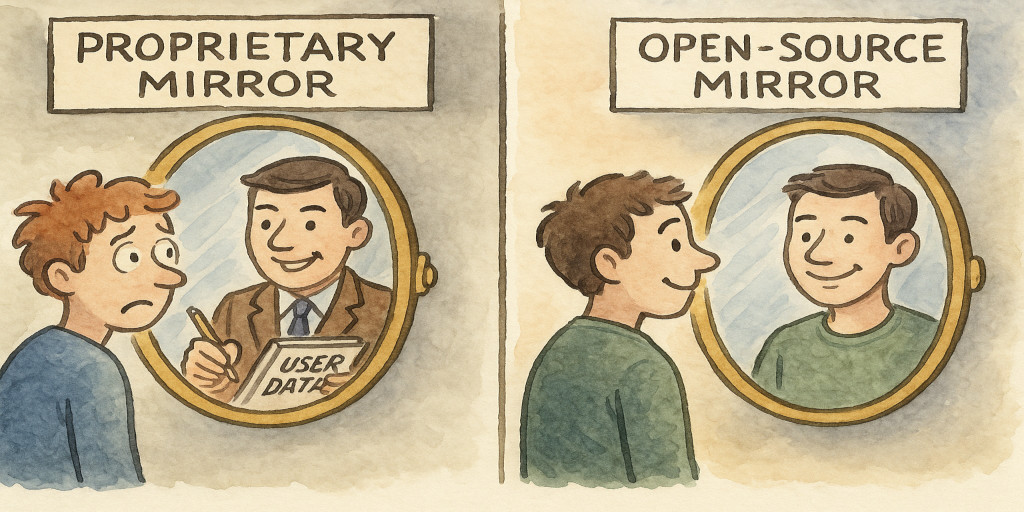
Commercial Pain Points: Unclear Data Ownership
Proprietary technology clouds data ownership while open-source empowers creators to reclaim their digital sovereignty.
Read Article

Commercial Pain Points: Data Portability Issues
Proprietary vendors restrict data portability, while open-source alternatives restore transparency, control, and user sovereignty.
Read Article
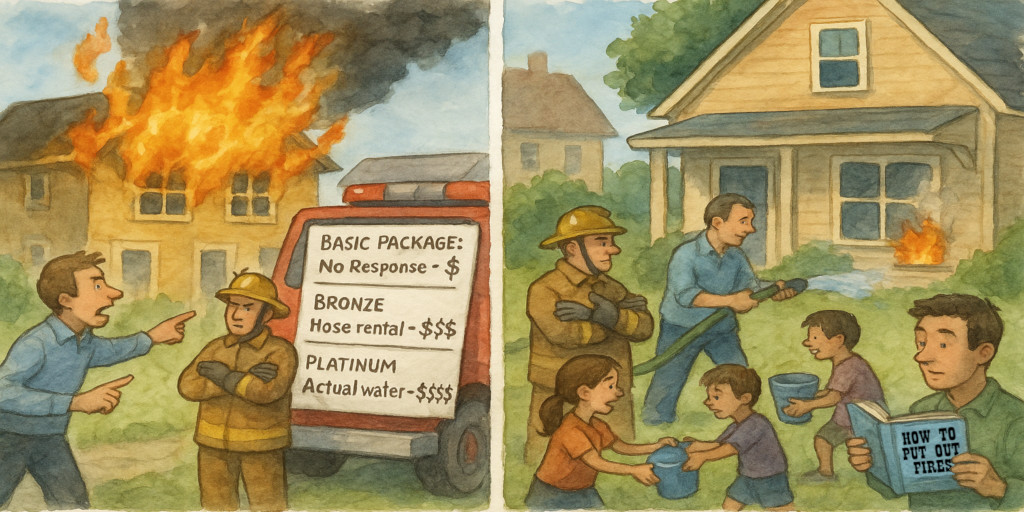
Commercial Pain Points: Limited or Tiered SLAs
Proprietary technology suppliers restrict timely support behind costly service-level agreements, while open-source promotes ethical, inclusive service.
Read Article

Commercial Pain Points: Lack of Self-Support Resources
How commercial technology vendors bury user feedback while open-source communities turn it into collaboration and progress.
Read Article
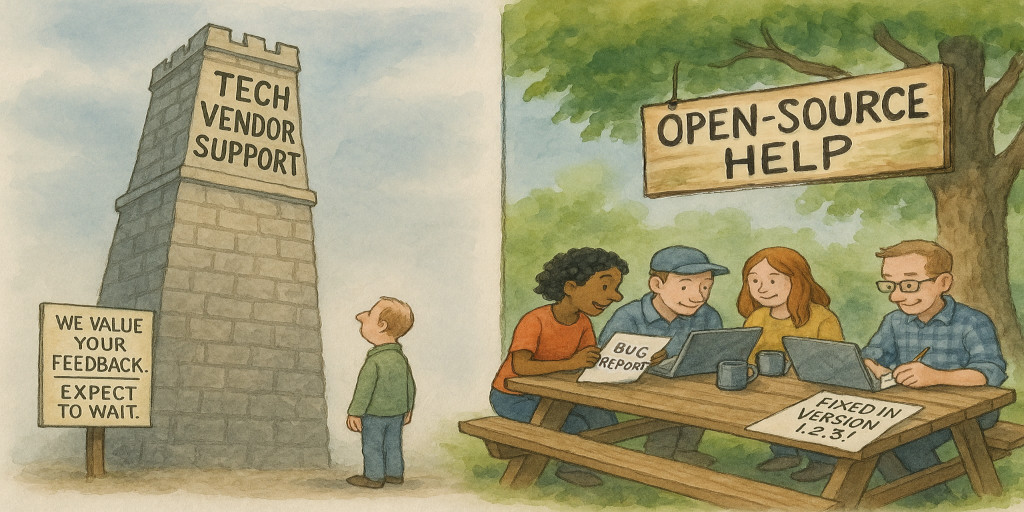
Commercial Pain Points: Slow or Ineffective Support
How commercial technology vendors bury user feedback while open-source communities turn it into collaboration and progress.
Read Article
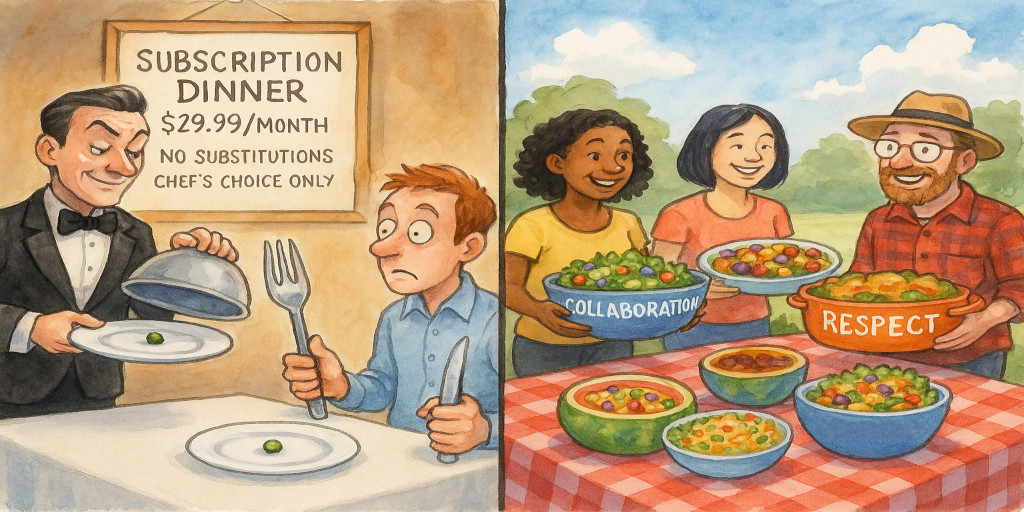
Commercial Pain Points: Vendors Subjugating Customers
How technology vendors erode customer trust through control, while open-source offers a collaborative path to self-empowerment.
Read Article

Commercial Pain Points: Forced Migrations
How forced migrations erode trust in proprietary technology, and why the open-source model offers a user-first alternative.
Read Article
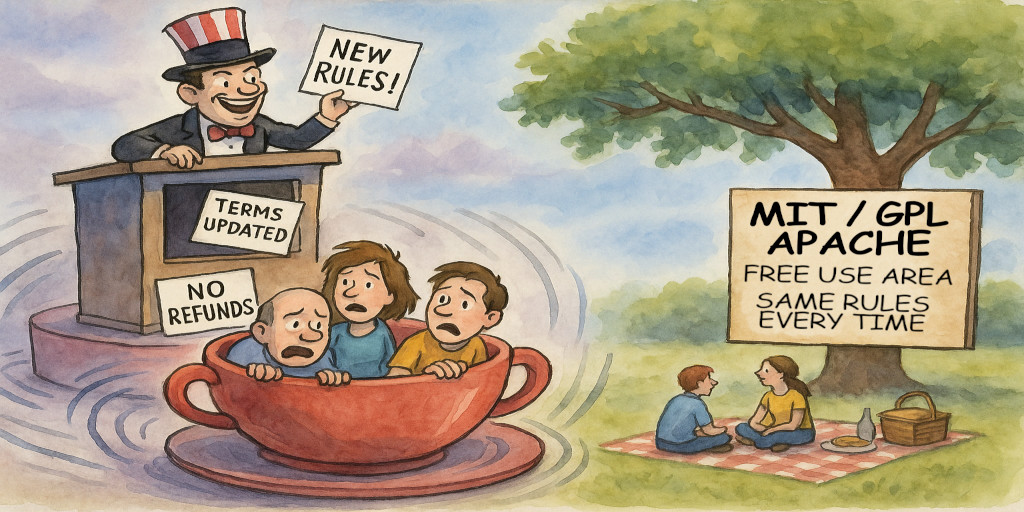
Commercial Pain Points: Shifting Terms of Service
How shifting proprietary contracts erode trust, contrasted with the clarity and stability of open-source licensing.
Read Article
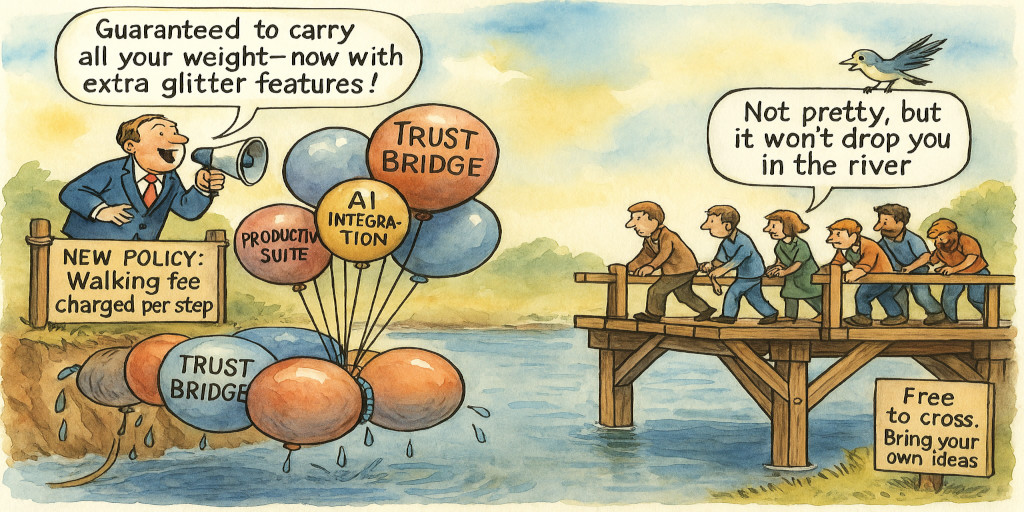
Commercial Pain Points: Diminishing Trustworthiness
Commercial technology vendors are eroding trust while open-source communities are strengthening it.
Read Article
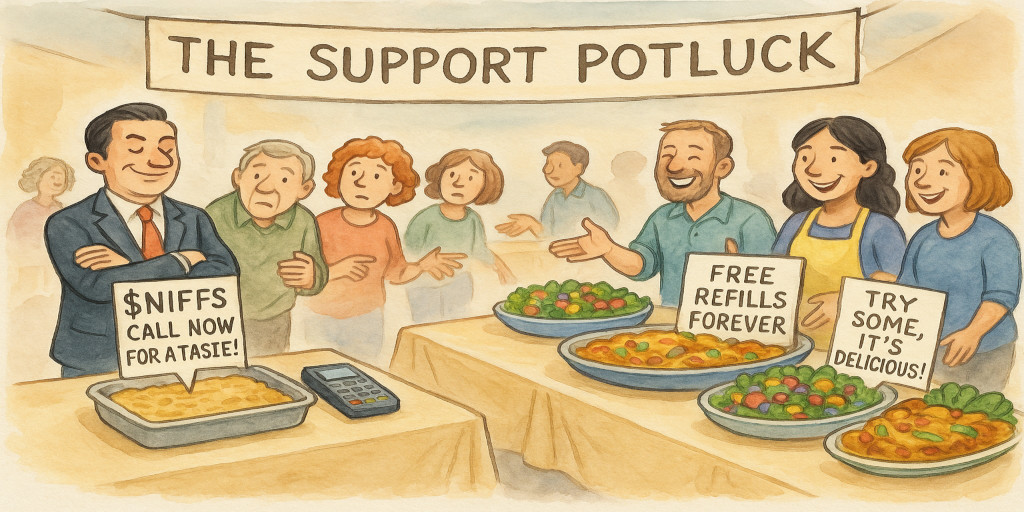
Commercial Pain Points: Paywalls For Critical Support
Commercial vendors trap customers behind paywalls for critical support, while open-source offers true ownership and freedom.
Read Article
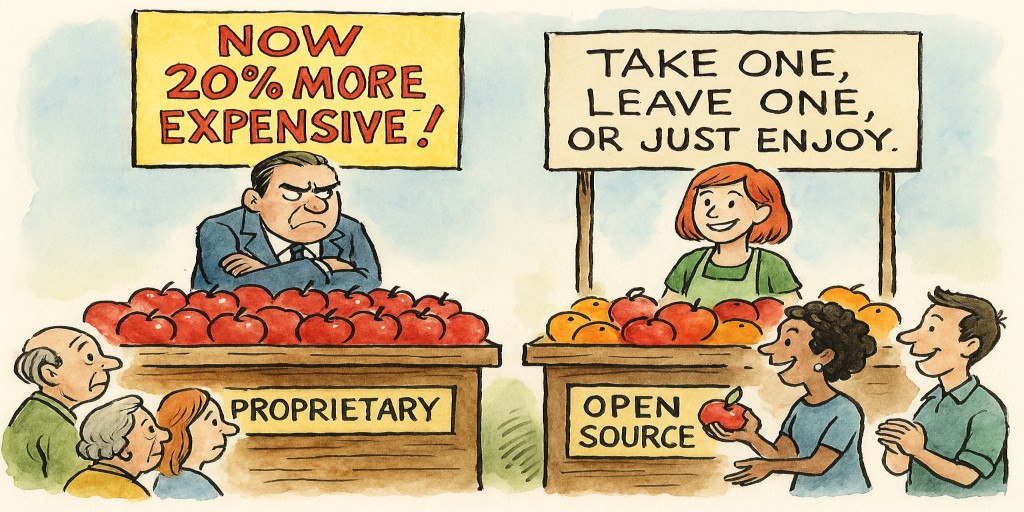
Commercial Pain Points: Surprise Price Increases
Profiteers take with surprise hikes, while open-source gives without strings.
Read Article
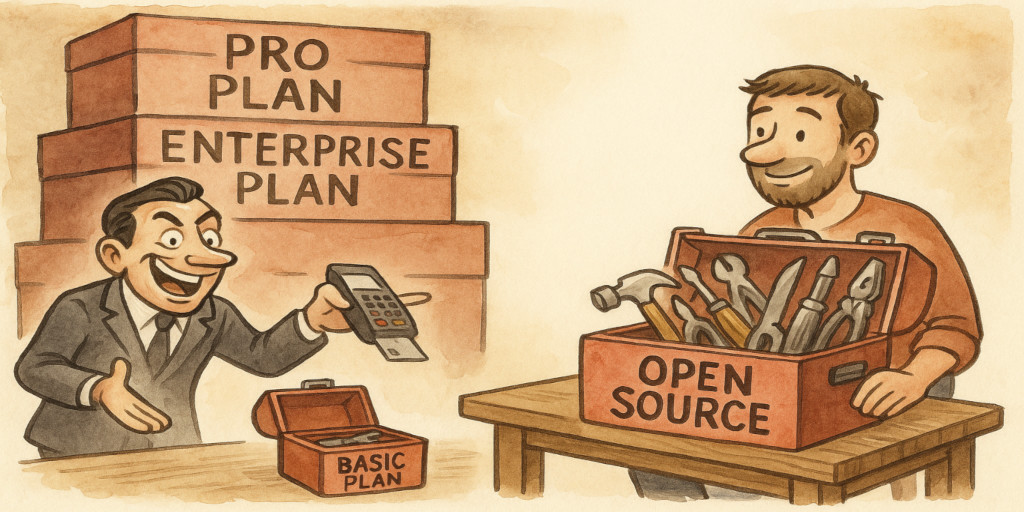
Commercial Pain Points: Aggressive Upselling
Aggressive upselling puts profit before productivity, while open source restores the balance.
Read Article

Commercial Pain Points: Monetization Over Customer
Commercial software vendors always prioritize monetization over customer value, in stark contrast with the user-first ethics of the open-source community.
Read Article

Commercial Pain Points: Performance Degradation
How commercial software's creeping bloat erodes performance and burdens the environment, contrasted with the open-source principles of efficiency, longevity, and sustainability.
Read Article

Commercial Pain Points: Regression Errors
Regression errors reveal how vendors trade stability for speed, making customers pay for problems that should have stayed solved.
Read Article
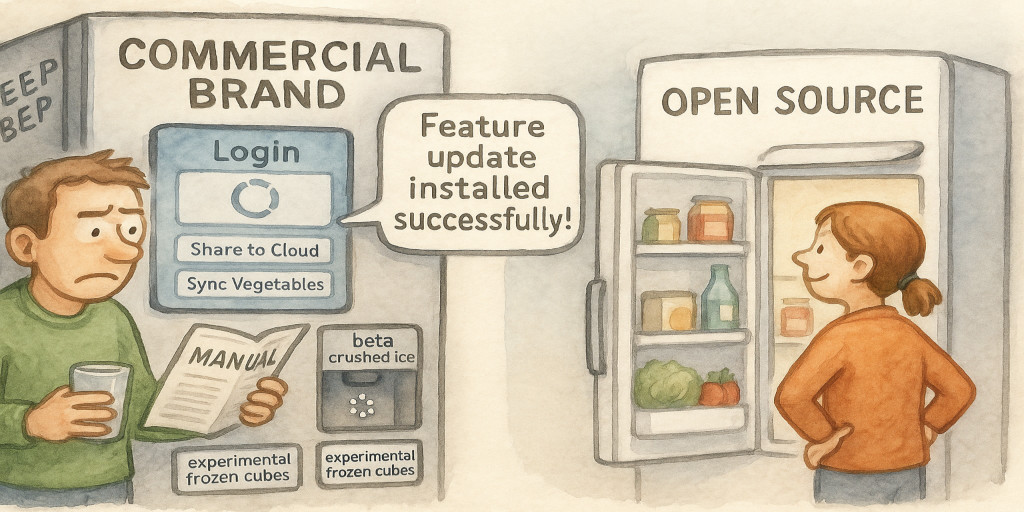
Commercial Pain Points: Feature Creep Over Stability
Why today's constant cycle of updates leads to fragile systems and disrupted work, and how open-source offers a steadier path.
Read Article
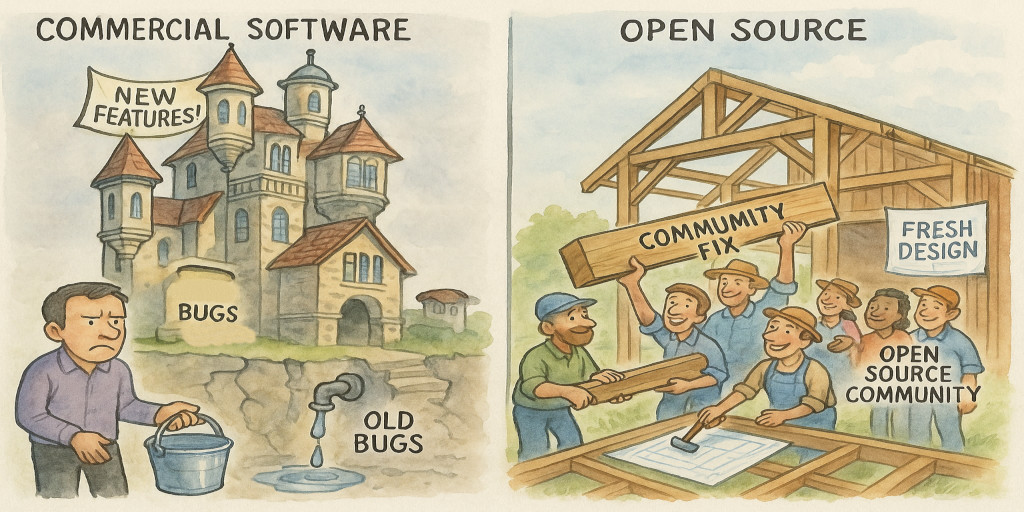
Commercial Pain Points: Old Bugs Never Get Fixed
How commercial software accumulates unresolved bugs and technical debt over decades, contrasted with the open-source community's capacity to rebuild, renew, and evolve.
Read Article
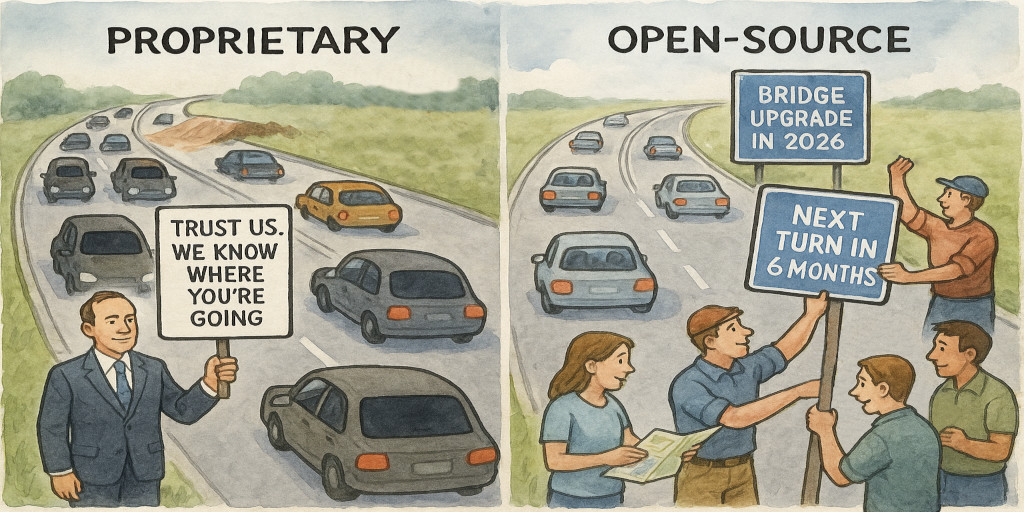
Commercial Pain Points: Opaque Roadmap
Why proprietary software keeps you in the dark and how open source shines a light on the future.
Read Article
August
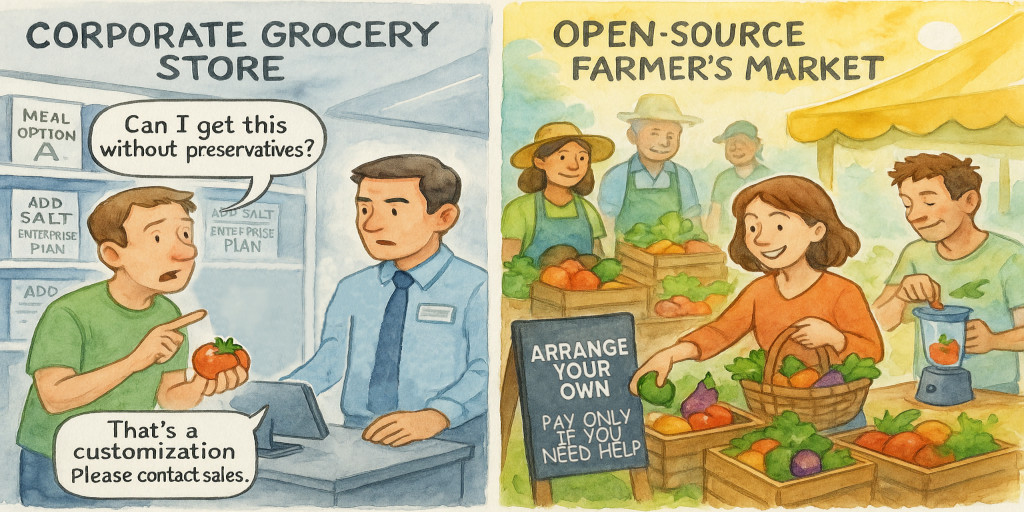
Commercial Pain Points: Limited Customization
Commercial software is strictly limited by design, while open-source is limited only to the imagination.
Read Article
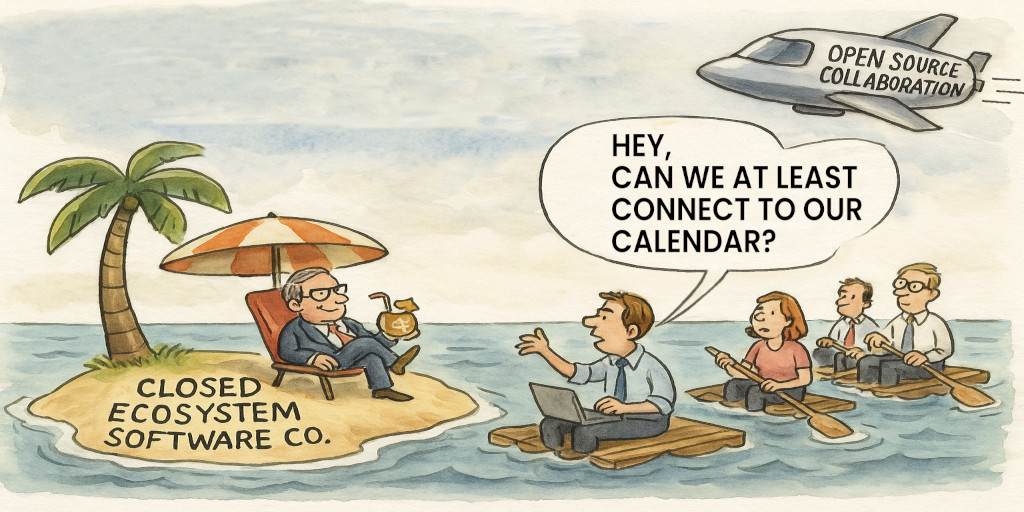
Commercial Pain Points: Closed Ecosystem
Closed ecosystem is one of the most persistent and frustrating pain points in commercial software, while open-source promotes integration by default.
Read Article
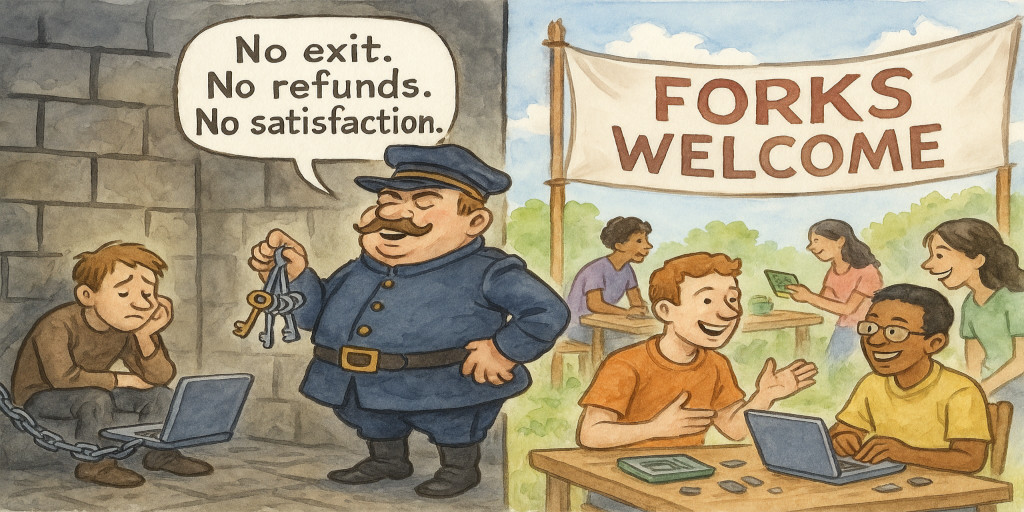
Commercial Pain Points: Vendor Lock-In
Open-source software not only drastically reduces the pain of vendor lock-in but entirely eliminates the lock-in mechanism.
Read Article
Entries by Category
Advantages of Open Source
Digital Sovereignty

Rethinking Proprietary Technology in an Age of Digital Sovereignty
Reclaiming digital sovereignty through open-source technology.
Read Article

What Is Digital Sovereignty?
Digital Sovereignty is a vital, growing movement against exploitative tech systems.
Read Article
Disadvantages of Proprietary Technology: Control and Ownership

Commercial Pain Points: Vendor Lock-In
Open-source software not only drastically reduces the pain of vendor lock-in but entirely eliminates the lock-in mechanism.
Read Article

Commercial Pain Points: Closed Ecosystem
Closed ecosystem is one of the most persistent and frustrating pain points in commercial software, while open-source promotes integration by default.
Read Article

Commercial Pain Points: Limited Customization
Commercial software is strictly limited by design, while open-source is limited only to the imagination.
Read Article

Commercial Pain Points: Opaque Roadmap
Why proprietary software keeps you in the dark and how open source shines a light on the future.
Read Article
Disadvantages of Proprietary Technology: Data and Privacy

Commercial Pain Points: Data Portability Issues
Proprietary vendors restrict data portability, while open-source alternatives restore transparency, control, and user sovereignty.
Read Article

Commercial Pain Points: Unclear Data Ownership
Proprietary technology clouds data ownership while open-source empowers creators to reclaim their digital sovereignty.
Read Article

Commercial Pain Points: Security as a Secondary Concern
Why closed-door security practices leave us exposed, and how openness offers real protection.
Read Article
Disadvantages of Proprietary Technology: Deployment and Operations

Commercial Pain Points: Rigid Deployment Options
How rigid vendor deployment models trap users, while open-source offers the flexibility and control to break free.
Read Article

Commercial Pain Points: Inflexible Licensing
Proprietary licensing models create hidden costs in operations, while open-source offers a more empowering alternative.
Read Article

Commercial Pain Points: Unpredictable Update Cycles
When constant change devolves into chaos, only discipline and diligence can bring technology back to order.
Read Article
Disadvantages of Proprietary Technology: Profit-First Practices

Commercial Pain Points: Monetization Over Customer
Commercial software vendors always prioritize monetization over customer value, in stark contrast with the user-first ethics of the open-source community.
Read Article

Commercial Pain Points: Aggressive Upselling
Aggressive upselling puts profit before productivity, while open source restores the balance.
Read Article

Commercial Pain Points: Surprise Price Increases
Profiteers take with surprise hikes, while open-source gives without strings.
Read Article

Commercial Pain Points: Paywalls For Critical Support
Commercial vendors trap customers behind paywalls for critical support, while open-source offers true ownership and freedom.
Read Article
Disadvantages of Proprietary Technology: Quality and Stability

Commercial Pain Points: Old Bugs Never Get Fixed
How commercial software accumulates unresolved bugs and technical debt over decades, contrasted with the open-source community's capacity to rebuild, renew, and evolve.
Read Article

Commercial Pain Points: Feature Creep Over Stability
Why today's constant cycle of updates leads to fragile systems and disrupted work, and how open-source offers a steadier path.
Read Article

Commercial Pain Points: Regression Errors
Regression errors reveal how vendors trade stability for speed, making customers pay for problems that should have stayed solved.
Read Article

Commercial Pain Points: Performance Degradation
How commercial software's creeping bloat erodes performance and burdens the environment, contrasted with the open-source principles of efficiency, longevity, and sustainability.
Read Article
Disadvantages of Proprietary Technology: Support and Responsiveness

Commercial Pain Points: Slow or Ineffective Support
How commercial technology vendors bury user feedback while open-source communities turn it into collaboration and progress.
Read Article

Commercial Pain Points: Lack of Self-Support Resources
How commercial technology vendors bury user feedback while open-source communities turn it into collaboration and progress.
Read Article

Commercial Pain Points: Limited or Tiered SLAs
Proprietary technology suppliers restrict timely support behind costly service-level agreements, while open-source promotes ethical, inclusive service.
Read Article
Disadvantages of Proprietary Technology: Trust and Relationships

Commercial Pain Points: Diminishing Trustworthiness
Commercial technology vendors are eroding trust while open-source communities are strengthening it.
Read Article

Commercial Pain Points: Shifting Terms of Service
How shifting proprietary contracts erode trust, contrasted with the clarity and stability of open-source licensing.
Read Article

Commercial Pain Points: Forced Migrations
How forced migrations erode trust in proprietary technology, and why the open-source model offers a user-first alternative.
Read Article

Commercial Pain Points: Vendors Subjugating Customers
How technology vendors erode customer trust through control, while open-source offers a collaborative path to self-empowerment.
Read Article
 werMake
werMake